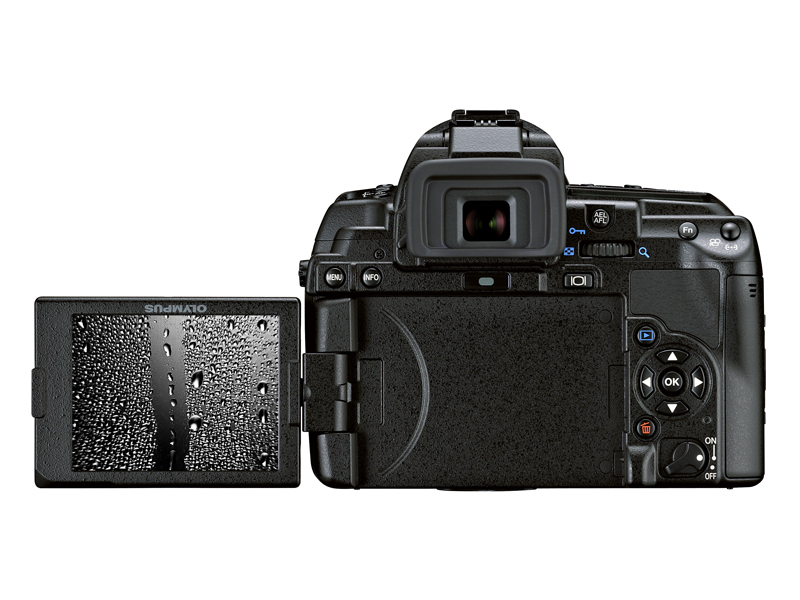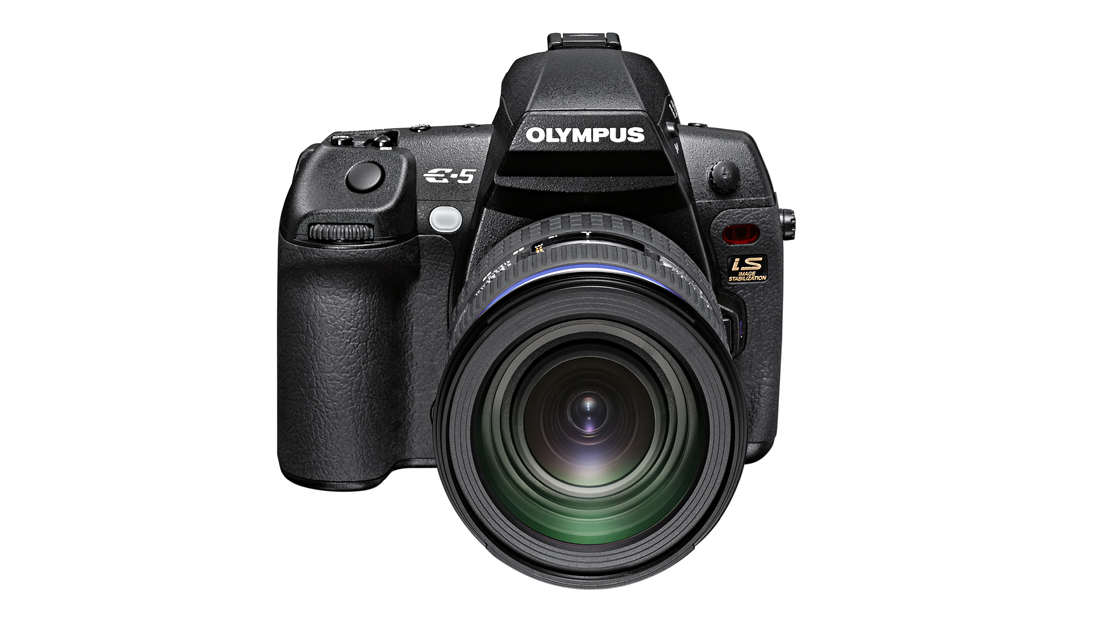Why you can trust TechRadar

For the dedicated stills photographer the most exciting upgrades in the Olympus E-5 vs E-3 are the increase in pixel count from 10.1 million to 12.3 million, a 3-inch LCD screen with 920,000 dots, a one stop higher maximum sensitivity setting (ISO 6400) and a new processing engine (TruePic V+) which Olympus claims is able to deliver the best resolution from any 12 million pixel sensor. The addition of an electronic level that can be displayed in either the LCD or the viewfinder is also attractive.
Though by itself perhaps not enough to convince someone to upgrade, it is one of the best implementations of a level that we have seen and it's easy to see in both displays. It is especially useful in a camera with an articulated screen (like both the E-3 and E-5) as it's easy to miss a sloping horizon when shooting from ground level or another awkward angle. When using the viewfinder it's helpful that the level stays illuminated (using the exposure compensation scale) even when the shutter release is depressed.
Though they haven't always had the highest resolution, Olympus DSLR LCDs have usually managed to punch a bit above their weight. With 920,000 dots the E-5's screen is only beaten by those on Canon's EOS 550D and EOS 60D which both have 1,040,000 dot LCDs, and it provides a good clear view of the scene being composed as well as of captured images. There's sufficient detail visible in the enlarged views to enable accurate manual focusing, helpfully the magnified view can be set to activate when the lens focus ring is rotated or when either the depth of field preview or Fn (function) button is depressed.
Olympus has also introduced video technology to its top-end DSLR, but while other manufacturers are starting to feature 1080p capability, Olympus has plumped for 720p (1280x720 pixel) video at 30fps in the Olympus E-5. It can shoot up to 7 mins of footage at this resolution, or 14 mins at 640x480 pixels. Though the built-in mic is monaural, there is a port to connect an external stereo mic.
Although the E-5's custom menu seems unnecessarily populated with features such as the white balance and metering options that you might expect to access elsewhere, there's also plenty of opportunity for photographers to set the camera to their personal preferences. Several button and dial control functions can be swapped or their operation reversed and its worth spending some time experimenting with them. It's the sort of thing that's worth revisiting after using the camera for a while.
For instance, initially it may seem sensible to set the Fn (function) button to 'One touch white balance', to allow the custom white balance to set quickly, but if you only tend to use it in slowly developing situations where time is not absolutely critical, it may be better to use it to access one of the other features.
There's plenty to choose from including activating face detection, depth of field preview, Live Preview, activating the home AF point, switching to manual focus, changing the file format, selecting the exposure mode, taking a test picture, setting the camera to a saved custom set-up (Myset 1-4), zooming in and out, activating the level, magnifying the on-screen image, selecting the AF point or switching IS mode.
Sign up for breaking news, reviews, opinion, top tech deals, and more.

With an Supersonic Wave Drive (SWD) lens such as the Zuiko Digital ED 12-60mm f/2.8-4.0 SWD mounted the E-5's 11-biaxial point AF system performs well. It focuses quickly and quietly in most situations. In the darkness of a pub music gig it managed to get the target sharp the vast majority of the time, even when one of the peripheral AF points was activated. It's not quite up to the standard of the Nikon D7000 or D300S with an f/2.8 optic in place, but it's not far behind.
However, it lacks the AF point selection options response customisation capability of these cameras, so despite its speed and greater focal length magnification factor, it may not be the first choice of dedicated sports snappers.
Like with most DSLRs, the E-5's live view AF system isn't suitable for use when shooting moving subjects, it focuses the lens just a little too slowly. This makes live view most useful with landscape, still life and macro subjects and although the contrast detection AF system can usually be relied upon to find the correct focus point, it makes more sense to focus manually, assessing sharpness on the LCD with the magnified view enabled.
The Olympus E-5 face detection does a great job of recognising that there are faces with the scene, but it still takes a little while to get them into sharp focus, especially in low light. It's important to remember to set the camera to Auto AF point selection when using face detection as otherwise it focuses on the subject under the last selected AF point (rather than the face) as soon as the shutter release button is pressed.
Like all Olympus DSLRs apart from the most basic E-450, the Olympus E-5 has built-in image stabilisation. This sensor-shifting mechanism claims to extend the safe hand-holdable shutter speed by up to 5 stops. That's the difference between 1/500 sec and 1/15 sec, which is a bold claim and whether or not it is possible to achieve it will vary from photographer to photographer and lens to lens. It is clear, however, that it does help prevent shake induced blur from spoiling images.
Current page: Olympus E-5: Controls and features
Prev Page Olympus E-5: Build quality and handling Next Page Olympus E-5: Image Quality